Montessori Classroom Design
Designing A Montessori Classroom – What You Need to Know
Creating a Montessori room from scratch is no easy task, but with the right Montessori classroom layout design elements and carefully thought-out layout, you can create an engaging and supportive learning environment for your students. This comprehensive guide explains the key components necessary for effective Montessori classroom design ideas.
“Layout of montessori classroom and design is based on the Montessori education method to provide children with rich teaching aids, create sufficient space and time, so that children can find ways to get along with themselves at an early age, learn how to deal with and accept emotions, and walk into the Meet the “”secret”” space of the inner self.
A Montessori classroom provides children with an environment suitable for development (free environment, sufficient space, rich teaching aids, and focused work) to help children develop their movements, language, intelligence, willpower, and emotions.
A Montessori classroom setup is an ideal country for countless people who love the Montessori teaching method. Montessori teachers provide a necessary environment for children’s development and growth through every detail of this room and provide the children with just-right assistance and guidance so that children can develop independent thinking and have a good character, such as be able to solve problems on their own, have the courage to face setbacks and failures, focus, independence, self-confidence, and full of enthusiasm for learning and life. Lay a solid foundation for the child’s life and create unlimited possibilities for future life.”
Thinking of designing a Montessori-style classroom? This comprehensive guide outlines all the key elements you need to create a supportive learning environment from scratch. A well-designed Montessori classroom floor plan can enhance learning and promote independence. Discover the key elements of a successful montessori preschool classroom layout here.
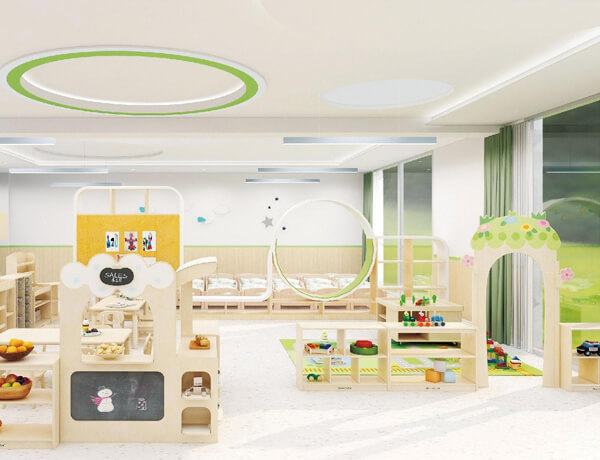
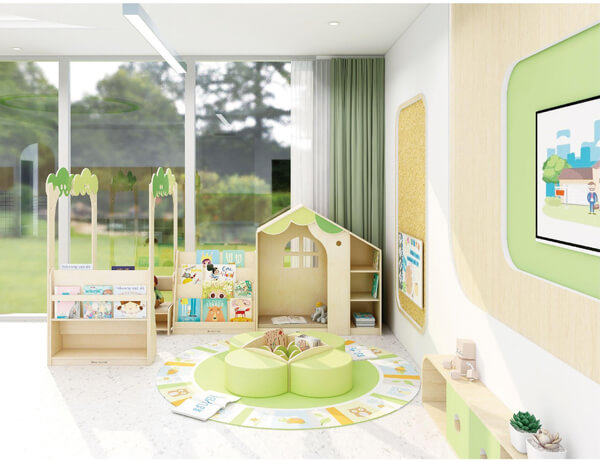
Montessori Classroom Layout
Montessori room setup and design are particularly important for children’s learning and growth. The scientific design of each space can create a safe, warm, and comfortable learning environment for children. Looking for inspiration for your Montessori classroom layout? Check out this guide to furniture placement and floor plans for optimal learning.
Daily Area
Through visual stimulation, let children learn to observe the size, height, shape, color and recognition of geometric figures, etc.. Through tactile stimulation, let children learn to distinguish objects and distinguish sounds.
Sensory Area
Through visual stimulation, let children learn to observe the size, height, shape, color and recognition of geometric figures, etc.. Through tactile stimulation, let children learn to distinguish objects and distinguish sounds.
Math Area
Use common materials and teaching aids in daily life to allow children to pair, arrange, and classify things to make abstract mathematics concrete, cultivate children's ability to analyze, integrate, and judge, thereby enhancing children's logic thinking ability.
Language Area
not only includes listening, speaking, reading, and writing, but also the cultivation of children's emotional attitudes and behavior habits; it mainly uses games, stories, etc. to gradually cultivate children's listening, speaking, reading and writing skills, so that children can learn to communicate and express , share, read, and form a good moral character.
Science and Culture Area
Cultivate children's macro international vision, including astronomy, geology, earth science, geography, flora and fauna, history, music, and art, covering almost everything in the universe.
The right Montessori classroom furniture and floor plan can make all the difference in creating a successful montessori classroom environment.
How to Create a Montessori Classroom as Child-Centered Environment
Classroom layout in Montessori is all about creating a child-centered environment that promotes exploration and discovery. Learn how to design a Montessori classroom with us.
One key aspect of this approach is the layout of a Montessori classroom, which should be carefully designed to promote independent learning and foster a sense of community among students. In this article, we’ll explore some tips and strategies for creating an effective Montessori classroom arrangement.
Create a designated area for each activity
In a Montessori classroom, it’s important to have designated areas for each activity or subject. This helps children understand where they should go to work on specific tasks and promotes a sense of order and organization. For example, you might have a reading corner with comfortable chairs and a selection of books, a math area with manipulatives and tools for counting and measuring, and a science table with materials for exploring the natural world. Be sure to clearly label each area and keep materials organized and easily accessible.
Use child-sized furniture and materials
One of the key principles of a Montessori classroom setup idea is to create an environment that is tailored to the needs and abilities of the children. This means using child-sized furniture and materials that are easy for them to handle and manipulate. For example, tables and chairs should be sized appropriately for their age and height, and materials should be organized in a way that is easy for them to access and put away. This not only promotes independence and self-confidence but also helps to prevent accidents and injuries.
Keep the classroom organized and clutter-free
In a Montessori classroom, organization is key. Materials should be arranged in a way that is easy for children to find and put away, and everything should have a designated place. This not only helps children develop a sense of order and responsibility but also makes it easier for them to focus on their work without distractions. Additionally, keeping the classroom clutter-free can help create a calm and peaceful environment that is conducive to learning and exploration.
Incorporate natural elements and sensory experiences
In a Montessori classroom, it’s important to incorporate natural elements and sensory experiences to promote exploration and discovery. This can include things like plants, natural light, and materials with different textures and smells. By engaging multiple senses, children are able to fully immerse themselves in their learning and develop a deeper understanding of the world around them. Additionally, incorporating natural elements can help create a calming and peaceful environment that promotes focus and concentration.
Allow for flexibility and freedom of movement
In a Montessori classroom, it’s important to allow for flexibility and freedom of movement. This means creating a space where children can move around freely and choose their own activities. Furniture should be child-sized and easily movable, allowing for children to rearrange the space as needed. Additionally, having designated areas for different activities, such as reading, art, and sensory play, can help children feel empowered and in control of their learning environment. By allowing for flexibility and freedom of movement, children are able to fully engage in their learning and develop a sense of independence and self-motivation.
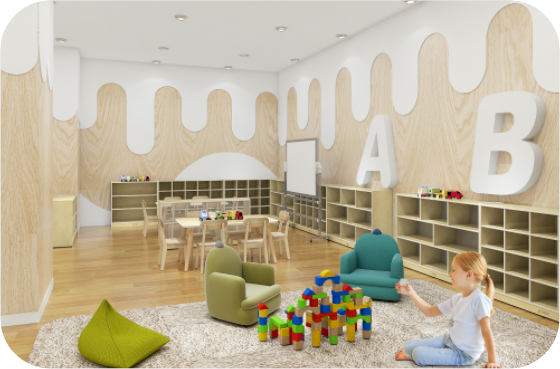
Montessori Toddler
“2-6 years old children should focus on having fun, but they are particular about what and how to play because children of different ages have different mental development. Montessori education philosophy is to help children grow up naturally. Different from traditional educational concepts and methods: Montessori education emphasizes two-handed work, self-education, and focuses on cultivating children’s sense of order, concentration, independence, and hand-eye coordination.
Product Material Introduction
Montessori Infant Classroom Layout Philosophy
Creating a conducive learning environment for children in kindergarten is essential. Designing a classroom that is both functional and aesthetically pleasing can be challenging, but with the right ideas and floor plan, it can be done. This includes creating a Montessori classroom layout that encourages collaboration and socialization among students, selecting furniture that is age-appropriate, and incorporating décor that will engage young learners. By taking these factors into account when designing a kindergarten classroom, educators can create an effective learning space for their students.
Montessori Classroom Design Ideas
How to Create a Calm and Inviting Space
Montessori education emphasizes the importance of a carefully designed learning environment. The classroom should be a place that encourages exploration, independence, and creativity. In this guide, we’ll explore the key elements of Montessori class decoration ideas and provide tips for creating a space that supports your child’s learning and development. A well-designed Montessori classroom can make all the difference in a child’s learning experience. Learn how to create a space with Montessori school design requirements that inspires and engages.

Focus on Natural Light and Neutral Colors
When designing a Montessori classroom decor, it’s important to create a calm and inviting atmosphere. One way to achieve this is by incorporating natural light and neutral colors into the space. Natural light not only provides a more pleasant environment but also helps regulate the body’s natural sleep-wake cycle. Neutral colors, such as beige, gray, and white, create a calming effect and allow the child’s work and creativity to stand out. Avoid bright or overly stimulating colors, as they can be distracting and overwhelming for young learners.
Incorporate Natural Materials and Plants
In addition to natural light and neutral colors, incorporating natural materials and plants can also create a calming and inviting atmosphere in a Montessori classroom. wooden furniture, bamboo rugs, and woven baskets are all great options for adding natural elements to the space. Plants not only add a touch of greenery, but they also help purify the air and create a sense of tranquility. Just be sure to choose plants that are safe for children and easy to care for.

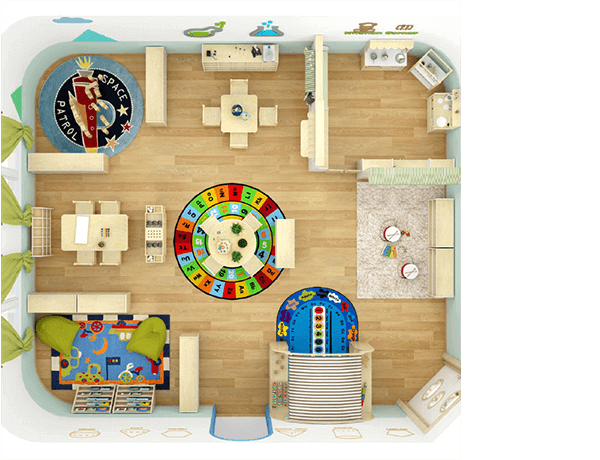
Create a Sense of Order and Organization
A key aspect of Montessori classroom decoration ideas is creating a sense of order and organization. This means having designated spaces for each activity and keeping materials neatly arranged and easily accessible. Use shelves, baskets, and trays to keep materials organized and labeled. This not only helps children find what they need, but it also teaches them important skills like responsibility and independence. Additionally, having a designated space for each activity helps children focus and reduces distractions.
Provide Accessible and Engaging Learning Materials
In a Montessori classroom, the learning materials are carefully chosen to be both accessible and engaging for children. This means that materials should be at the child’s level and easy to manipulate. For example, if you are teaching math, use manipulatives like counting beads or blocks so that children can physically move and count. Additionally, materials should be visually appealing and interesting to children. Use bright colors, interesting textures, and real-life objects to capture their attention and make learning fun. By providing accessible and engaging learning materials, you can help children develop a love of learning that will last a lifetime.
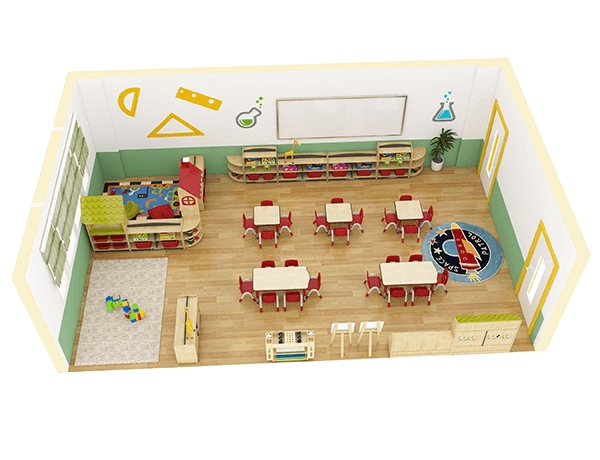

Foster a Sense of Community and Collaboration
In addition to creating a visually appealing and engaging space, it’s important to foster a sense of community and collaboration in Montessori classroom ideas. This can be achieved by creating spaces for group work and encouraging children to work together on projects and activities. For example, you can create a reading corner with comfortable seating where children can read together or a science table where they can conduct experiments as a group. By promoting collaboration and teamwork, you can help children develop important social skills and a sense of belonging in the classroom.
Montessori Classroom vs Traditional Classroom
Montessori classrooms offer a unique approach to education that differs from traditional classrooms. Find out why the benefits of a Montessori classroom over a traditional classroom education may be the right fit for your child with this informative article.
Individualized Learning
One of the biggest benefits of a Montessori school is the emphasis on individualized learning. In a traditional classroom, students are often taught the same material at the same pace, regardless of their individual needs and abilities. In a Montessori classroom layout, however, students are encouraged to learn at their own pace and are given the freedom to explore topics that interest them. This approach allows students to develop a love of learning and reach their full potential.
Hands-On Learning
Another benefit of a Montessori classroom is the emphasis on hands-on learning. In traditional classrooms, students often learn through lectures and textbooks, which can be boring and unengaging. In a Montessori classroom organization, however, students are encouraged to learn through exploration and discovery. They are given materials and activities that allow them to learn through touch, movement, and exploration. This approach not only makes learning more fun and engaging, but also helps students retain information better.
Mixed-Age Classrooms
Another unique aspect of Montessori classrooms is the use of mixed-age classrooms. In traditional classrooms, students are typically grouped by age, with each grade level having its own classroom. In a Montessori classroom, however, students of different ages are grouped together. This allows younger students to learn from older students and older students to reinforce their knowledge by teaching younger students. It also promotes a sense of community and encourages students to work together and help each other.
Self-Directed Learning
One of the key benefits of a Montessori classroom is the emphasis on self-directed learning. In traditional classrooms, teachers typically lead the instruction and students follow along. In a Montessori classroom layout ideas, however, students are encouraged to take ownership of their learning and explore topics that interest them. Teachers act as guides, providing materials and resources for students to use, but ultimately it is up to the student to decide what they want to learn and how they want to learn it. This approach fosters independence, creativity, and a love of learning that can last a lifetime.
Emphasis on Social and Emotional Development
Another benefit of a Montessori classroom is the emphasis on social and emotional development. In traditional classrooms, the focus is often on academic achievement, with little attention paid to the emotional well-being of students. In a Montessori classroom, however, students are encouraged to develop strong social skills, such as communication, cooperation, and empathy. They also learn to regulate their emotions and develop a sense of self-awareness. This focus on social and emotional development helps students to become well-rounded individuals who are better equipped to navigate the challenges of life.
Conclusion
Montessori classrooms and traditional classrooms have distinct differences in their approach to education. While traditional classrooms focus on teacher-led instruction and standardized testing, Montessori classrooms prioritize individualized learning and hands-on experiences.

